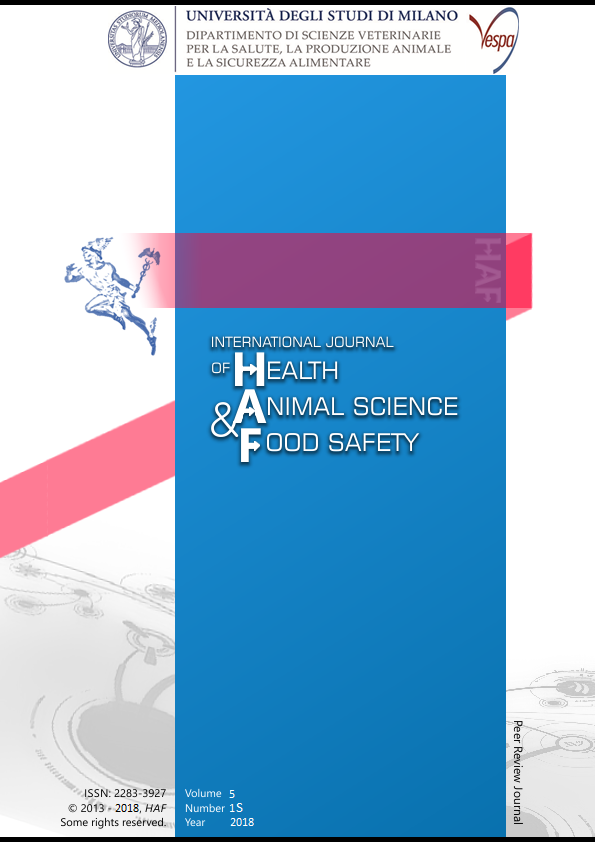Abstract
Fipronil and Amitraz are broadly used insecticides for the treatment or prevention for animal health, indoor pest control, and commercial crop protection. As the use of Fipronil or Amitraz on food-producing animals was not allowed by the EU legislation, the Maximum Residue Limit (MRL) values of Fipronil and Amitraz were set at the detection limit of 5 ng mL-1 and 10 ng mL-1, respectively. According to the database of Rapid alert system for food and feed (RASFF), after the Belgian authority reported Fipronil residues in chicken eggs in 2017, there were 719 follow-up reports from 34 countries. Fipronil and Amitraz are included in the Italian National Residue Program so it is necessary to develop a selective, sensitive, specific and rapid method. Three extraction methods were evaluated on fresh egg blank samples to determine the presence of Fipronil, as well as its metabolites and Amitraz. In the solvent-salt method the sample was added by water, NaCl and formic acetonitrile, followed by hexane to remove potential fat. In the Quick, Easy, Cheap, Effective, Rugged, and Safe (QuEChERS) method the sample was extracted by Superl® Que Citrate powder and acetonitrile, followed by Superl® PSA powder. In the water-associated QuEChERS method the sample was mixed with water and acetonitrile, followed by Superl® Que Citrate powder, then the supernatant was collected and mixed with CaCl2. The analyses of the extracts were performed with high performance liquid chromatography coupled to Q-Exactive Orbitrap high-resolution mass spectrometer (LC-HRMS). Furthermore, Thompson (2000) mentioned that the Coefficient of variation (CV) is acceptable if it is lower than 22%. Based on the obtained recovery values (72 to 113%) and CV (1.67 to 14.69%), the water-associated QuEChERS method was selected because the recoveries rates obtained with the other methods were lower than 70%.
Calibration curves exhibited correlation values ranging from 0.9653 to 0.9999(Figure 1); the limits of detection ranged from 0.08 to 1.21 ng mL-1, and the limits of quantification were from 0.28 to 4.04 ng mL-1. The preliminary results fulfilled the European criteria for the validation of the analytical methods. Further analyses have been performed to evaluate the repeatability and reproducibility.
Riferimenti bibliografici
European Commission, 2002. 2002/657/EC: Commission Decision of 12 August 2002 implementing Council Directive 96/23/EC concerning the performance of analytical methods and the interpretation of results. Official Journal of the European Communities. 221, 8-36.
European Commission, 2005. Regulation (EC) No 396/2005 of the European Parliament and of the Council of 23 February 2005 on maximum residue levels of pesticides in or on food and feed of plant and animal origin and amending Council Directive 91/414/EEC Text with EEA relevance. Official Journal of the European Union. 70, 1-16.
European Commission, Rapid Alert System for Food and Feed (RASFF), Available: https://ec.europa.eu/food/safety/rasff_en [Accessed 27 April 2018].
Gupta, C. R. 2007. Amitraz. In: Gupta, C. R. Veterinary Toxicology. New York: Elsevier; p514-517.
Poppenga, H. R. and Oehme, W.F. 2010. Pesticide Use and Associated Morbidity and Mortality in Veterinary Medicine. In: Krieger, R. Hayes' Handbook of Pesticide Toxicology (Third Edition). London: Elsevier; p285-301.
Thompson M. 2000. Recent trends in inter-laboratory precision at ppb and sub-ppb concentrations in relation to fitness for purpose criteria in proficiency testing. Analyst. 125(3), 385-386.
This work is licensed under a CC BY-SA 4.0 international

